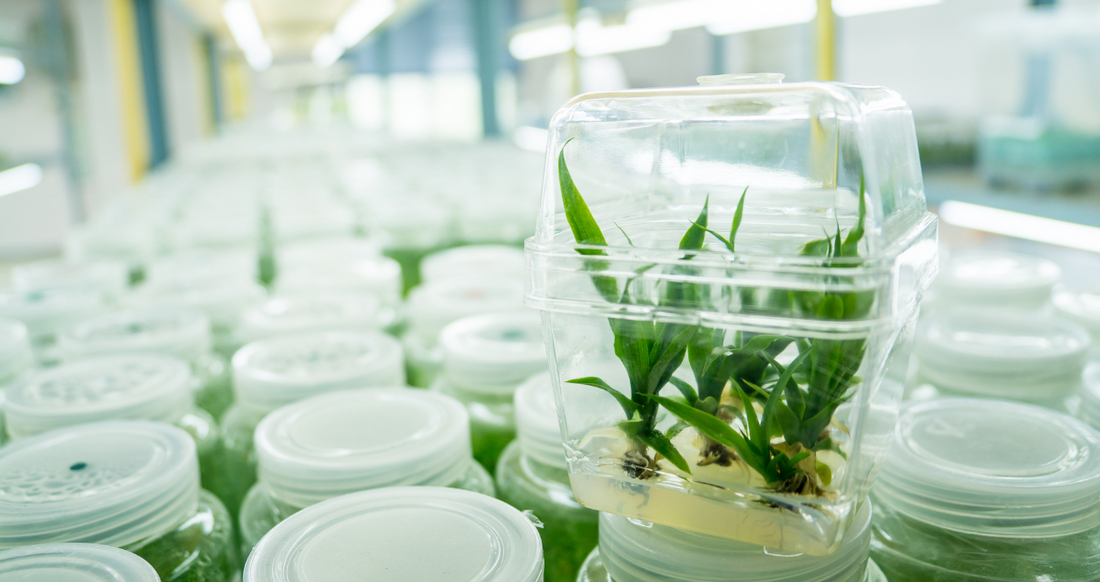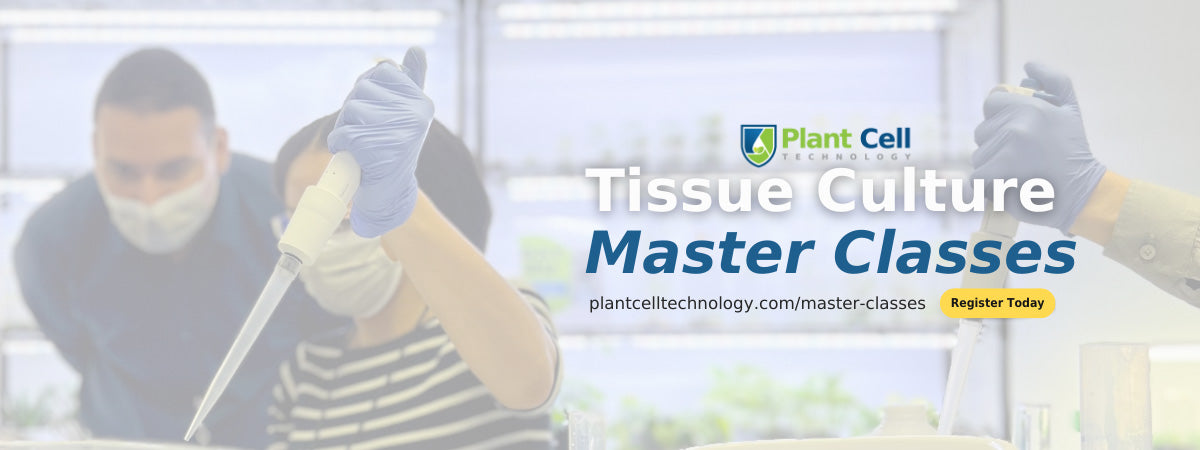
PPM™, Agar & MS Media: How To Use The Three Together?
As a content and community manager, I leverage my expertise in plant biotechnology, passion for tissue culture, and writing skills to create compelling articles, simplifying intricate scientific concepts, and address your inquiries. As a dedicated science communicator, I strive to spark curiosity and foster a love for science in my audience.


Introduction
Performing advanced lab workflows or applying high-throughput techniques in labs, like tissue culture, needs one to use high-quality lab-grad chemicals and advanced equipment. The poor quality of any of these components spoils all our efforts and money put into the process.
That’s why it’s essential to understand the quality of the product you are using and the results you should expect after its application.
In plant tissue culture, the five components essentially used in labs include A culture media (Mostly MS) media, Agar, PGRs, Sugar, and PPM™ (Plant Preservative Mixture). Though the use of PPM™ is an option, it’s good to have when your target is to obtain disease-free cultures. PGRs are used for the multiplication and rooting phase of the tissue culture. For sugar, you can either add lab-grad sugar or table sugar in the media. So, it’s not a complicated component to understand.

So, you’re left with three ingredients that you need at the beginning of the tissue culture process: MS media, Agar, and PPM™. They are essential to obtain establishing cultures and obtaining healthy callus growth.
For the beginner, it’s a daunting task to understand how they should use these products, at what time, at what time, and in what sequence.
These are so many questions but do not worry when we are here to answer them!
This article takes you through all three components of tissue culture including what they are, their role in tissue culture, and how can you use them all together in the tissue culture process.
MS Media
MS Media is short for Murashige and Skoog Media. It’s one of the most exploited media in tissue culture procedures worldwide. Its components hit right in the growth and development of many plants we know. It includes:
- Inorganic nutrient: It includes mineral salts that are important for the growth and development of plants. It is categorized into two groups: Macronutrients (Calcium, magnesium, nitrogen) and micronutrients (copper, iron, and zinc).
- Organic nutrient: It mainly includes vitamins and amino acids, required for the growth and differentiation of the cultures.
Some manufacturers also supply vitamins added to MS media. However, the concentration of vitamins that suits each plant differs. And, for some plants, vitamins are not good for their growth. That’s why most culturists prefer to work with MS media without vitamins.
Agar
How do plants get their food, nutrients, vitamins, and minerals in natural conditions? How do they stand upright and sturdy? What’s holding them on the ground?
The answer to all these questions is “Soil!”
But, when plants are transferred to in vitro conditions, we don’t use soil for propagation purposes. Because, as you know soil is home to maybe millions of microbes. And, to obtain disease-free plants, we don’t want to intentionally invite them through it. Here, one thing you must understand is that soil contains a mix of good and bad microbe, which is a different topic that we will cover another time. It’s just to give you an idea that it doesn’t only bring bad guys to plants.
So, the role of soil is played by agar in the labs.
Agar is added to the media and mixed homogeneously. It supplies nutrients, vitamins, and solid support to plants for lustrous growth and development.
Agar is a solidifying agent, having a jelly-like appearance. Chemically, it’s composed of agarose and agaropectin. The optimal pH range for solidifying agar is between 5.2 and 5.6. After dissolving in boiling water at 37°C, it solidifies into a firm gel. Agar is usually added at a concentration of 6-8 g/L (0.5%-10%).
Further, based on the concentration of agar used in a media, the media can be classified into: liquid media (no agar), semi-solid media, and solid media (maximum concentration of agar).
Based on your goal, you can choose the right concentration of agar and the type of media for your tissue culture process.
Plant Preservative Mixture (PPM™)
PPM™ is an all-around solution to all contamination problems in tissue culture labs. It’s a robust broad-spectrum formulation to eliminate contamination from your lovely plant cultures. Today, it’s the only effective solution against contaminants, including endophytic bacteria. The product is tested by labs worldwide and has proven its efficacy in every place.
Though antibiotics are also used in some labs to eradicate contaminants, but they are not only ineffective in destroying microbes, but they also negatively affect your cultures' growth.
Here’s a list of five advantages offered by PPM™ over antibiotics:
- PPM™ protects culture from all kinds of contamination: airborne, water, or human-induced. Specifically, it targets bacteria and fungi in plant tissue culture media and explants.
- PPM™ helps in protecting your culture from contaminants and doesn't disturb the genetic makeup of the plant.
- PPM™ neither disturbs the genetic makeup of the plant nor affects the growth of the callus or explants in tissue culture.
- Generally, 1-2 ml of PPM™ is only required in 1L of the growth media.
- The best characteristic of PPM™ is that it’s autoclavable at 1.05 kg/cm2 (15 psi) and 121°C for 20 minutes. But, PPM™ should be added post-autoclave to media containing proteins, before dispensing to culture vessels.
How to Use Plant Cell Technology’s MS Media, Agar, and PPM™ Together?

Follow the given steps to prepare the best-quality media for your tissue culture plants using PCT’s top three products:
- Take a beaker and add 800 ml of sterile distilled water to it.
- To the water add PCT’s MS Media grams— you don’t need to measure it as it comes in a measured bottle).
- Add 30 grams of sugar.
- Keep the beaker on the magnetic stirred so the media homogenously get mixed.
- Then, add PPM™ , generally 1-2 ml based on the plants and contamination level in a 1liter of the MS media.
- Add water to make 950 ml of the volume of the media.
- Adjust the pH of the media between 5.5-6.0.
- Add agar to the media and keep it stirring.
- Make up the volume of the media to 1000ml.
- Autoclave the medium for 20 minutes at 15 psi.
- After sterilization, pour the required amount into the culture vessel and as it solidifies, you’re all set to start your tissue culture experiment.
How is Plant Cell Technology helping culturists worldwide in their plant tissue culture application?
Plant Cell Technology is helping tissue culturists around the world by providing unique and world-class products and services that smoothen their process. It has MS media, agar, gellan gum, Plant Preservative Mixture (PPM), culture vessels, Biocoupler™, and masks in its store to facilitate your processes.
Furthermore, we provide consultations for those facing challenges at any stage of their tissue culture endeavors. This gives you the opportunity to directly converse with a tissue culture expert about your issues and receive immediate solutions.
If you are a beginner navigating your way through tissue culture, our comprehensive master classes serve as an excellent resource to educate yourself in the field and kickstart your journey. Our experts cover everything in the class, from basic principles to advanced procedures. Moreover, you get hands-on practice with our instructors to learn the exact execution of experiments and understand the dos and don'ts during the process.
Plant Cell Technology is your one-stop shop for all your tissue culture needs. So, don't wait any longer; explore our products and services here, and feel free to reach out to us at info@plantcelltechnology.com for any queries or concerns.
Happy Culturing!!
Blog Categories
View by Level
Popular Blogs

New Technical Agar Vs Supreme Agar
Introduction What’s the secret element that supports and holds plants in vitro? Not sure? It’s the solidifying agent. Solidifying agents...
Read More
Get the Protocol: How to Tissue Culture Nepenthes Using Nodes and Seeds
Introduction This plant is non-vegeterian... ...and we're not kidding! Nepenthes belongs to one of the most interesting families of carnivorous...
Read MoreSubscribe to Our Newsletter











Join the conversation
Your email address will not be published. Required fields are marked